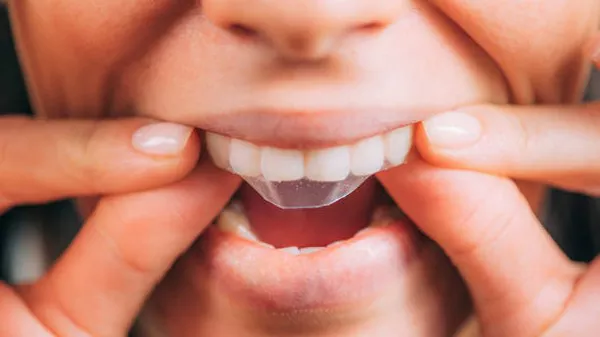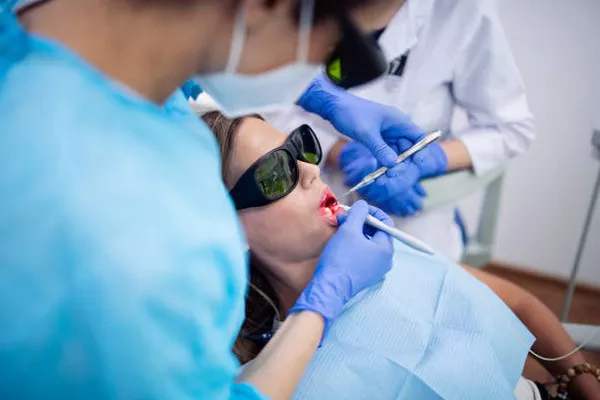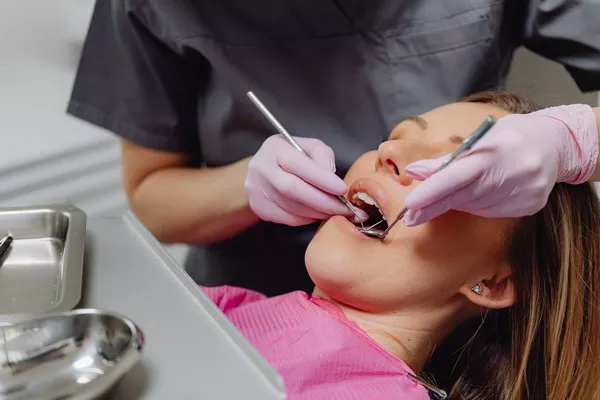In today’s image-conscious society, the desire for a brighter, whiter smile has led to the widespread popularity of teeth whitening products. Among these products, teeth whitening strips are one of the most commonly used at-home solutions. However, while these strips promise a quick and convenient way to achieve a brighter smile, they come with their fair share of risks and drawbacks. In this article, we will delve into why teeth whitening strips may not be the best option for achieving a whiter smile and explore alternative methods that may offer safer and more effective results.
Potential Risks of Teeth Whitening Strips
One of the primary concerns associated with teeth whitening strips is the potential for adverse effects on oral health. While these strips are generally safe when used as directed, there are several risks that users should be aware of.
Enamel Damage: Enamel is the outer layer of the teeth that protects them from decay and damage. One of the main ingredients in teeth whitening strips is hydrogen peroxide, which works by bleaching the teeth to remove stains. However, if used excessively or incorrectly, hydrogen peroxide can erode the enamel, leading to increased tooth sensitivity and a higher risk of cavities and other dental issues.
Sensitivity to Dentin: Beneath the enamel lies the dentin, a softer tissue that contains the tooth’s nerve endings. Prolonged use of teeth whitening strips can cause the dentin to become more exposed, leading to heightened sensitivity to hot, cold, sweet, or acidic foods and beverages. This increased sensitivity can make eating and drinking uncomfortable and may require additional dental treatment to alleviate.
Ingredients and Their Effects
To understand why teeth whitening strips can be harmful, it’s essential to examine the ingredients commonly found in these products and their effects on oral health.
Hydrogen Peroxide: As mentioned earlier, hydrogen peroxide is the primary bleaching agent in teeth whitening strips. While it is effective at breaking down stains and discoloration on the teeth, it can also penetrate the enamel and cause damage to the underlying dentin. Additionally, hydrogen peroxide can irritate the gums if it comes into contact with them, leading to inflammation and discomfort.
see also: What is the best teeth whitening method at home?
Short-Term vs. Long-Term Use
The effects of teeth whitening strips can vary depending on how often they are used and for how long. Understanding the differences between short-term and long-term use is crucial for minimizing the risks associated with these products.
Short-Term Use: When used as directed for a short period, teeth whitening strips can effectively remove surface stains and brighten the smile. However, even short-term use can lead to increased tooth sensitivity and gum irritation, especially if the strips are left on for longer than recommended.
Long-Term Use: Prolonged or frequent use of teeth whitening strips can have more serious consequences for oral health. Continued exposure to hydrogen peroxide can weaken the enamel, making the teeth more susceptible to decay and damage. Additionally, overuse of whitening strips can exacerbate tooth sensitivity and cause gum recession, leading to long-term oral health issues.
Proper Usage Guidelines
To minimize the risks associated with teeth whitening strips, it’s essential to follow proper usage guidelines. Here are some tips for using whitening strips safely and effectively:
Follow Manufacturer Instructions: Always read and follow the instructions provided by the manufacturer carefully. Pay attention to the recommended wear time and frequency of use to avoid overexposure to the bleaching agent.
Do Not Exceed Recommended Durations: Avoid leaving whitening strips on for longer than the recommended duration, as this can increase the likelihood of enamel damage and sensitivity.
Use Sensitivity Toothpaste: If you experience increased tooth sensitivity after using whitening strips, switch to a toothpaste specifically formulated for sensitive teeth. These toothpastes contain ingredients that help alleviate discomfort and protect the teeth.
Take Breaks Between Treatments: Allow your teeth time to recover between whitening treatments. Taking breaks can help prevent overexposure to hydrogen peroxide and reduce the risk of enamel damage and sensitivity.
see also: How much does permanent teeth whitening cost?
Alternatives to Whitening Strips
Fortunately, there are several alternative whitening methods available that may offer safer and more effective results than teeth whitening strips.
Professional Dental Treatments: For individuals seeking dramatic results and personalized care, professional dental treatments such as in-office whitening or take-home whitening kits prescribed by a dentist may be a better option. These treatments typically use higher concentrations of whitening agents but are administered under the supervision of a dental professional to ensure safety and efficacy.
Whitening Toothpaste and Mouthwash: Whitening toothpaste and mouthwash can help remove surface stains and brighten the teeth without the use of bleaching agents. While these products may not deliver the same dramatic results as whitening strips, they can be effective for maintaining a bright smile between professional treatments.
Consulting a Professional
Before using teeth whitening strips or any other whitening products, it’s essential to consult with a dental professional, especially if you have pre-existing dental issues or concerns. A dentist can assess your oral health and recommend the most appropriate whitening method based on your individual needs and goals. Additionally, regular dental check-ups can help monitor the health of your teeth and gums and detect any signs of damage or sensitivity early on.
Conclusion
While teeth whitening strips may offer a quick and convenient solution for achieving a brighter smile, they come with potential risks and drawbacks that should not be overlooked. By understanding the potential risks associated with whitening strips, following proper usage guidelines, exploring alternative whitening methods, and consulting with a dental professional, individuals can make informed decisions about their oral health and achieve a whiter smile safely and effectively.
FAQs about Teeth Whitening Strips
1. Are whitening strips bad for your teeth?
When used as directed, whitening strips are generally safe and effective for most people. However, overuse or improper application can lead to potential risks such as tooth sensitivity, gum irritation, or enamel damage. It’s essential to follow the instructions provided with the whitening strips and to consult with a dentist if you have any concerns about their use or if you experience any adverse effects.
2. Why you shouldn’t use Crest Whitestrips?
While Crest Whitestrips are a popular choice for at-home teeth whitening, some individuals may choose not to use them due to personal preferences or specific dental conditions. Reasons for avoiding Crest Whitestrips might include:
Sensitivity: Some people may experience increased tooth sensitivity when using whitening strips, particularly if they have pre-existing sensitivity issues.
Gum Irritation: Improper application or prolonged use of whitening strips can irritate the gums, causing discomfort or inflammation.
Enamel Damage: Overuse or misuse of whitening products, including Crest Whitestrips, can potentially damage tooth enamel, leading to long-term oral health concerns.
Ultimately, the decision to use Crest Whitestrips or any other whitening product should be based on individual dental health needs and preferences.
3. Are teeth whitening strips recommended by dentists?
Teeth whitening strips are generally considered safe and effective for at-home use and are often recommended by dentists as an affordable and convenient option for mild to moderate tooth discoloration. However, it’s important to consult with a dentist before starting any whitening treatment to ensure it’s appropriate for your dental health and to receive personalized recommendations.
4. Why are whitening strips banned?
Whitening strips are not banned in general, but certain formulations or ingredients may be restricted or banned in some countries due to safety concerns or regulatory requirements. For example, some countries may restrict the concentration of hydrogen peroxide or other whitening agents in over-the-counter whitening products to protect consumers from potential risks such as tooth sensitivity or enamel damage. It’s essential to check the regulations and guidelines in your specific region before purchasing or using whitening strips. Additionally, always follow the instructions provided with the product and consult with a dentist if you have any questions or concerns about its safety or effectiveness.
You Might Be Interested In































